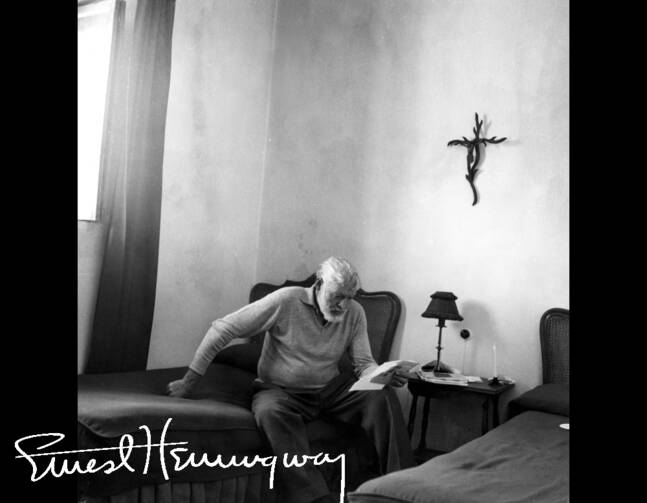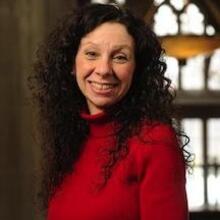“Show me a hero and I’ll write you a tragedy.” –F. Scott Fitzgerald
Reading a great biography is like watching a tragedy unfold. The promises of youth gradually give way to the limitations imposed by reality, and demise and denouement inevitably ensue.
This is especially compelling when the subject of the biography is a larger-than-life figure—a cultural hero—a person whose outsized story precedes him. His tragedy then serves to humanize him, making us witnesses to the ways in which he shares our common fate, despite his fame and record of accomplishment, to empathize with him and to mourn the snuffing out of a light that once burned so bright.
I have been living with Hemingway, his parents, his five siblings, his four wives, his three sons and his innumerable friends and fans, for 24 days.
I have just finished reading Mary V. Dearborn’s Ernest Hemingway, the first new biography of the celebrated American writer to emerge in 15 years and only the second written by a woman. Clocking in at 738 pages, it is a book that requires a long-term relationship. Unlike classic tragedy, which depicts the hero’s precipitous fall, biographical tragedy takes its time. I have been living with Hemingway, his parents, his five siblings, his four wives, his three sons and his innumerable friends and fans, for 24 days. Now they are all gone ungentle into that good night, and I feel, as Aristotle might have predicted, pity and fear. Pity for the talent he cultivated and squandered, for the love he received and rejected, for the strength of mind and body he possessed in such generous measure and inexorably lost. Fear on account of the recognition that the same human disasters will one day befall me. Hemingway’s loss is now my loss, his story my story. My relationship to him and to his work will never be the same.
I spent a month chasing Hemingway this past summer—something I did not intend to do. I was traveling in Spain—the one country in the world Ernest loved best. (Yes, he is “Ernest” now, familiarity breeding an ambivalent affection. Biography invites us into intimacy.) Everywhere I went, Ernest had already been—in Sevilla and Granada and Cordoba, where he watched the bullfights and drank in the cafes; in Madrid, where he witnessed the violence of the Spanish Civil War, participated in it and wrote about it, and drank in the cafes; and, most visibly of all, in Pamplona, where he returned nine summers for the Running of the Bulls, fished in the Irati River and drank in the cafes. (My essay on bullfighting can be found here.)
In Biarritz and Bilbao, Santiago and San Sebastian, the ghosts of Ernest and his entourage haunted the streets. Spain loves Hemingway as much as he loved it. Statues of him appear in the most unlikely places. Streets are named for him. He has left his mark. In fact, Hemingway helped to shape Spain. His depictions of the Festival of San Fermin and the attendant bullfights turned what was a local festival in Pamplona into an international event. Tens of thousands of people descend on the little Basque town for those nine days in July, a turn of events Ernest rued. He feared he had ruined a small and beautiful thing.
Ernest was chased not only by admiring friends and fans but was driven by his own internal demons.
Reading Mary Dearborn’s biography, I spent a second month chasing Hemingway, only this time the hunt covered a broader geographic area (from Oak Park to Africa, Italy to Idaho, Cuba to Ketchum) and simultaneously immersed me in Ernest’s troubled and troubling psyche. For Ernest was chased not only by admiring friends and fans but was driven by his own internal demons: the specter of mental illness; his father’s depression and eventual suicide foreshadowing his own as well as those of two siblings and one of his granddaughters; his gradual decline into alcoholism, despite the warning example of his friend and fellow writer, F. Scott Fitzgerald, who suffered from the disease and succumbed young; his inability to remain faithful to his friends and to the women who loved and married him; and, despite his posturing and legendary egotism, his constant fear of losing his talent as a writer. Even as he was living large, touring Europe, big-game hunting in Africa, deep-sea fishing off the coast of Key West and Cuba, falling in love with beautiful women, wining and dining with movie stars, enjoying literary fame and winning the Nobel Prize, Ernest suffered, experiencing pain almost in the same measure that he experienced pleasure. He was a blessed man—he was a poor soul. He was a brilliant writer—he was a fool. He was magnetically attractive—he was a jerk.
Tragedy raises ordinary men to the level of kings, and it turns kings into ordinary men. Biography enlarges the life of its subject and cuts its subject down to size. The two genres share this paradoxical function. Their heroes move us as they repel us. We recognize them as both ourselves and not ourselves at all. The gulf that separates us is vast—greater than the distance between audience and stage, reader and text. And yet, whether for an hour or a month, we have lived the hero’s life, walked around in his oversized shoes and returned to our comparatively little lives, richer for having known him and poorer for his loss.
“Show me a hero and I’ll write you a tragedy,” F. Scott Fitzgerald wrote. As a tragic figure himself, he knew whereof he spoke. “The Sun Also Rises,” Hemingway insisted, in the full recognition that his own star—and ours—would surely, sadly, splendidly, set.
Corrections, Sept. 22 and Jan. 8: This column originally reported that one of Hemingway's sons was a suicide. Gregory Hemingway died of a heart attack in 2001 while in a detention center in Florida. Also, Mary V. Dearborn is not the first woman biographer of Hemingway; Verna Kale's biography came out a few months earlier.










https://www.americamagazine.org/voices/angela-alaimo-odonnell -- Thank you for returning this publication to a literary place. I had almost dropped America Magazine from my reading list because of the biased views on both side of the aisle.